-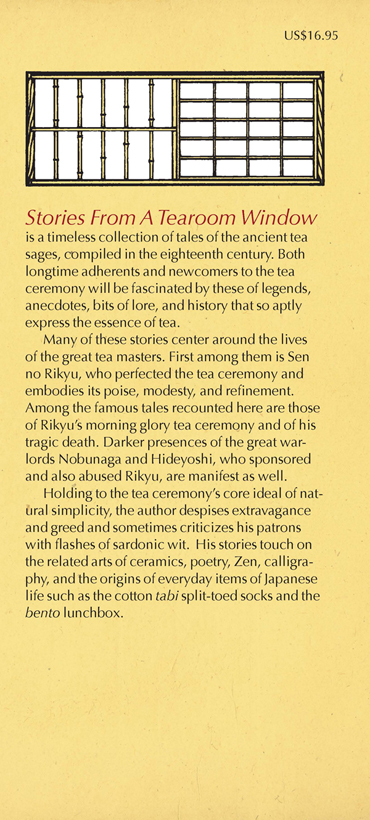
STORIES FROM A TEAROOM WINDOW
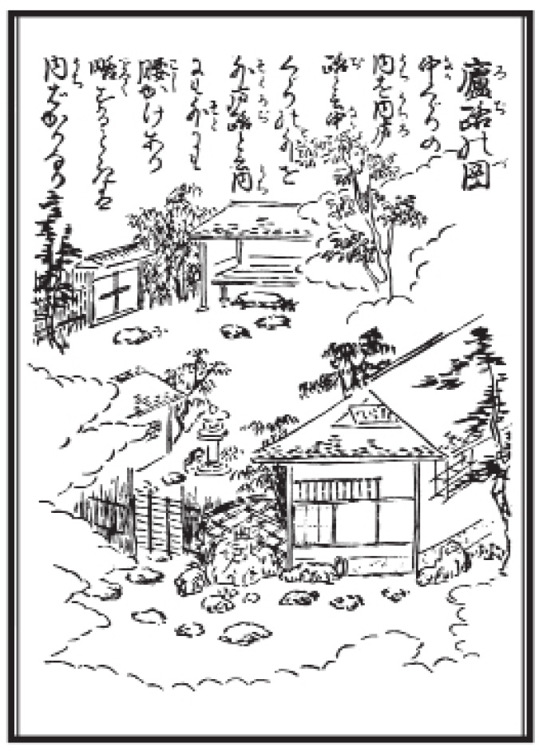
1 (Frontispiece). The quiet setting of a tea cottage (right), with the waiting bench in the outer part of the tea garden.
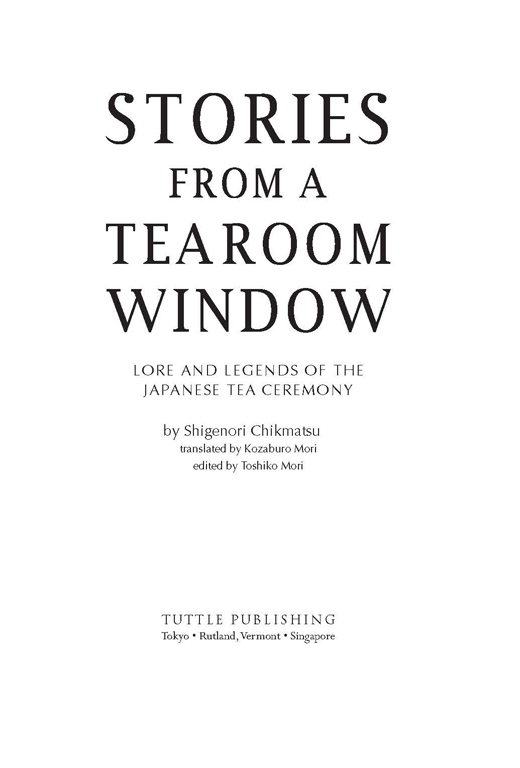
Published by Tuttle Publishing, an imprint of Periplus Editions (HK) Ltd., with editorial offices at 364 Innovation Drive, North Clarendon, Vermont 05759 USA and 61 Tai Seng Avenue, #02-12, Singapore 534167
1982 by Charles E. Tuttle Co., Inc.
All rights reserved.
No part of this publication may be reproduced, stored in a retrieval system or transmitted in any form or by any means, electronic, mechanical, photocopying, recording, or otherwise, without prior written permission from the copyright owner.
Library of Congress Catalog Card No. 82-80013
Previously published under ISBN 0-8048-1385-X
ISBN 978-1-4629-0256-9
Distributed by
America, Latin America & Europe
Tuttle Publishing
364 Innovation Drive
North Clarendon, VT 05759-9436 U.S.A.
Tel: 1 (802) 773-8930; Fax: 1 (802) 773-6993
info@tuttlepublishing.com
www.tuttlepublishing.com
Japan
Tuttle Publishing
Yaekari Building, 3rd Floor
5-4-12 Osaki
Shinagawa-ku
Tokyo 141 0032
Tel: (81) 03 5437-0171; Fax: (81) 03 5437-0755
tuttle-sales@gol.com
Asia Pacific
Berkeley Books Pte. Ltd.
61 Tai Seng Avenue, #02-12
Singapore 534167
Tel: (65) 6280-1330; Fax: (65) 6280-6290
inquiries@periplus.com.sg
www.periplus.com
12 11 10 09 10 9 8 7 6 5 4 3 2 1
Printed in Singapore
TUTTLE PUBLISHING is a registered trademark of Tuttle Publishing, a division of Periplus Editions (HK) Ltd.
 Contents
Contents
 List of Illustrations
List of Illustrations
|
|
|
|
|
|
38-39 |
|
|
|
|
|
|
|
64-65 |
|
|
|
|
|
|
|
|
102-103 |
|
|
|
|
|
|
128-29 |
|
|
|
|
|
154-55 |
|
172-73 |
|
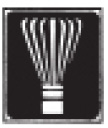 Translators Preface
Translators Preface
IT WAS IN 1973 that Toshiko Mori, my wife, came upon an old handwritten Japanese manuscript of this book in a pile of ancient documents in the Tokushima Prefectural Library. She was attracted by the stories it contained, and after further research she discovered that the book had been very popular among aficionados of the tea ceremony when it was first published in 1804. Her interest inspired her to produce a newly edited and annotated edition, which was published in 1978, exactly two hundred years after the death of the author, Chikamatsu Shigenori.
During the books preparation I was able to observe my wifes work, sometimes discussing its content and sometimes enjoying a bowl of tea over it with her. Thus I came to attempt this translation into English.
Several features of the book have been adapted to make it easier for the Western reader to understand. For example, Western dates and measurements have been added, and Shigenoris sometimes confusing use of names has been adjusted somewhat. It should be noted that peoples ages are given in the stories by the Japanese count, which is one or two years greater than the equivalent Western count.
My happiness will be beyond description if these stories prove to be of interest to foreign readers, and help them to achieve a better understanding of the tea ceremony and of Japanese culture.
I would like to express my gratitude to Mr. R. P. Chase for his assistance in polishing this translation, and to Mr. Makoto Ando for help with the romanization of Chinese names. Thanks are also due to Mr. Hiroichi Tsutsui, director of the Urasenke Foundations Konnichian Library, for his encouragement and assistance.
The Konnichian Library kindly allowed me to reproduce here illustrations from its copy of the 1804 Chaso Kanwa (Stories from a Tearoom Window) , which appear as Figs. 8, 16, 25, 32, 38, and 40. The National Diet Library permitted me to use Figs. 1, 3, 15, 21, 34, and 35, which come from the 1771 book Chado Hayagaten (A Beginners Guidebook to the Tea Ceremony) by Chin a. Figs. 2, 18, and 22 are from Cha-no-yu: The Japanese Tea Ceremony by A. L. Sadler, courtesy of the Charles E. Tuttle Company. The other illustrations are by the skilled hands of Fumiaka Kamada and Hide Doki. I am indebted to the following works for information on the tea ceremony:
Hayashiya, Tatsusaburo, and Nagashima, Fukutaro. Zusetsu Sado Taikei (Complete Illustrated Explanation of the Tea Ceremony) . Tokyo: Kadokawa, 1963.
Iguchi, Kaisen. Tea Ceremony . Translated by John Clark. Osaka: Hoikusha, 1975.
Kuwata, Tadachika. Sado Jiten (Dictionary of the Tea Ceremony) . Tokyo: Tokyodo, 1956.
Okakura, Kakuzo. The Book of Tea . 1906. Reprint. Rutland and Tokyo: Charles E. Tuttle Co., 1956.
Sadler, A. L. Cha-no-yu: The Japanese Tea Ceremony . 1933. Reprint. Rutland and Tokyo: Charles E. Tuttle Co., 1963.
Yukawa, Sei. Rikyu no Hana (Rikyus Flowers). Tokyo: Tokyodo, 1970.
Note : In this book, premodern Japanese names are written in Japanese style (surname first), and modern names are written in Western style (surname last); however, the authors name is written in Western style on the jacket and title page.
Page references in italics refer to illustrations while those in roman refer to the text.
 Introduction
Introduction
CHIKAMATSU SHIGENORI, the author of this book, was born in 1695 the eldest son of Chikamatsu Shigekiyo, a warrior and retainer of the Tokugawa clan in Owari Province (Aichi Prefecture at present). Shigenori was commonly known as Hikonoshin, and he used the pen names Nankai and Nogenshi. He also signed his name Chikamatsu Hikonoshin Fujiwara Shigenori.
When Shigenori was seventeen, he was appointed page to the feudal lord of Owari. He was a very promising retainer and was expected to become a high councillor to the lord in the future. But when Shigenori had served in his post for only half a year, his lord died. After the late lords brother succeeded him, Shigenori was put in charge of the horses and grooms, at a reduced salary. However, he was not discouraged by his demotion, but rather took advantage of his leisure time to study military science very diligently. In this way he was able to become an authority on military strategy, about which he wrote a hundred books. A versatile man, he also studied the tea ceremony, the Shinto religion, haiku poetry, and waka poetry.
Next page
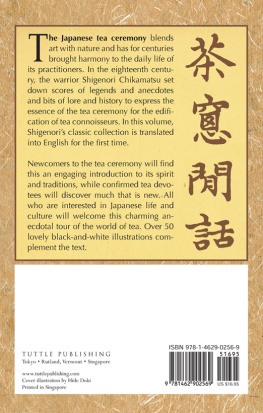
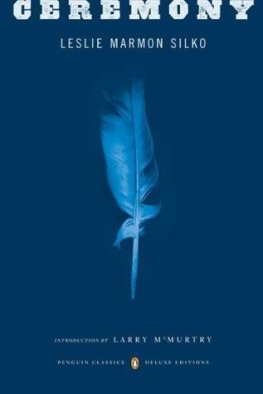
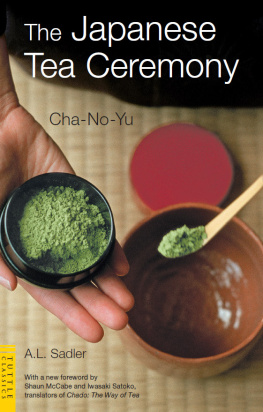
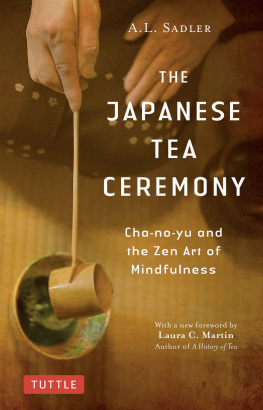


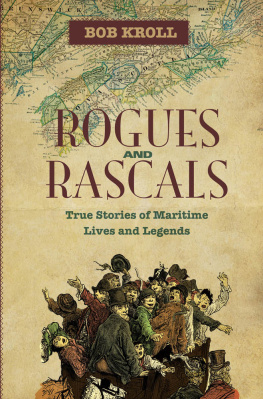
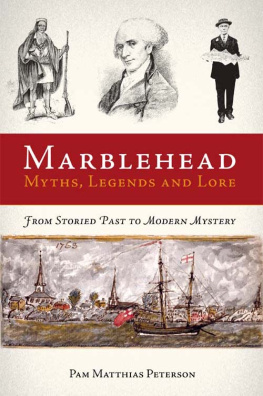






 Contents
Contents List of Illustrations
List of Illustrations Translators Preface
Translators Preface Introduction
Introduction